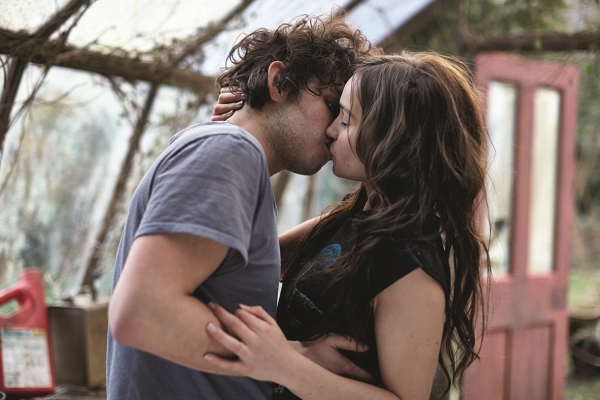Grey Give Vodafone An Endless Kiss
The Kiss', Grey Londonulls latest spot for Vodafone, is a glorious journey through a couple's life, seamlessly woven together and punctuated by a series of lip-locks that convey romance, passion and devotion. We chatted to ECD Nils Leonard about bringing a lifetime to screen.
Grey Give Vodafone An Endless Kiss Creating an ad that makes people cry isn't exactly the first stipulation on many clients' list of campaign goals, but it's safe to say that the sniffles induced by Grey London's wonderfully moving 'The Kiss' were wholeheartedly welcomed by Vodafone. Launched towards the start of this month, 'The Kiss' is a glorious journey through a couple's life, seamlessly woven together and punctuated by a series of lip-locks that convey romance, passion and devotion.
Creating an ad that makes people cry isn't exactly the first stipulation on many clients' list of campaign goals, but it's safe to say that the sniffles induced by Grey London's wonderfully moving 'The Kiss' were wholeheartedly welcomed by Vodafone. Launched towards the start of this month, 'The Kiss' is a glorious journey through a couple's life, seamlessly woven together and punctuated by a series of lip-locks that convey romance, passion and devotion.
Conceived by Grey's Nils Leonard and Leo Rayman, the spot has already enjoyed a healthy social media and blog reaction, complimenting the film's tone and remarkable direction from Academy's Frederic Planchon. We chatted to ECD Nils Leonard about the concept, the execution and the technical challenges of bringing a lifetime to screen.
Where did the concept for the film come from? What was the challenge that Vodafone approached you with?
This isn't a clever ad, it's simple. It came from a question that Leo (our head of strategy) asked me, 'If you could have one good thing happen forever, what would it be?' After I'd got the smutty stuff out of my mind I got lost in romance. An ageing kiss was irresistible as a filmic concept. The other side to this was doing something that would challenge the category and Vodafone's previous work. Something emotional, something provocative.
When you create a piece of work like this, how do you categorise it? Is it an ad? A short? A visual poem?!
On our work with Vodafone globally we've approached it trying to influence or create culture.
Our intention was to borrow more from film, music and long form than advertising. Longer cuts, more unconventional photography and pushing the casting harder, all help create more filmic, more unusual and disruptive experiences.
After the ad was planned, how did you go about finding a director?
I was overwhelmed by the interest in the work. It became about spotting the people who really got it, who felt like we did about the piece. Fred really conjured what we'd all seen in our heads, he didn't want to make something that felt like other work. I felt like I was talking to someone who would take it beyond what I'd seen.
The casting of a film like this is pretty vital. How much time do you dedicate to getting the visuals right?
This was the most incredible casting I've ever seen. I remember our first meeting on casting where Fred laidout the shots on a table in order and just feeling I was watching a man get older in stills on a table. We made some minor tweaks but the relief of knowing we didn't need loads of post to make this happen was very liberating. Another learning was that if the performance came first, if the emotion was real, then the mind wouldn't study the similarities as closely. Real acting talent was critical. The test films were as good as the finished work so minds were put at ease pretty quickly.
The spot is quite subtly post-heavy. Were you concerned that the execution might not work at any point?
No. As we shot, we created a rough composition of the film. With the quality of the casting the transitions were the only thing to worry about. And when the emotion is credible you don't think about transitions or scene changes. We knew that if the film became about that stuff, we'd have failed. If people were thinking about how we merged scenes or linked shots then they were looking at the wrong stuff.
What was the client's reaction to the film?
They were moved. And brave enough to back a powerful film across different markets globally.
It isn't easy to make this sort of work play across a variety of markets, as always, trust is a key factor.
What's up next?
Equally filmic, equally surprising work, that starts to separate Vodafone from their predictable category.
Posted on 26th April 2013










 Membership
Membership



